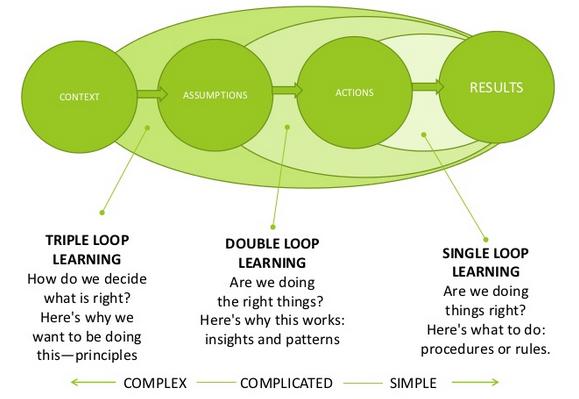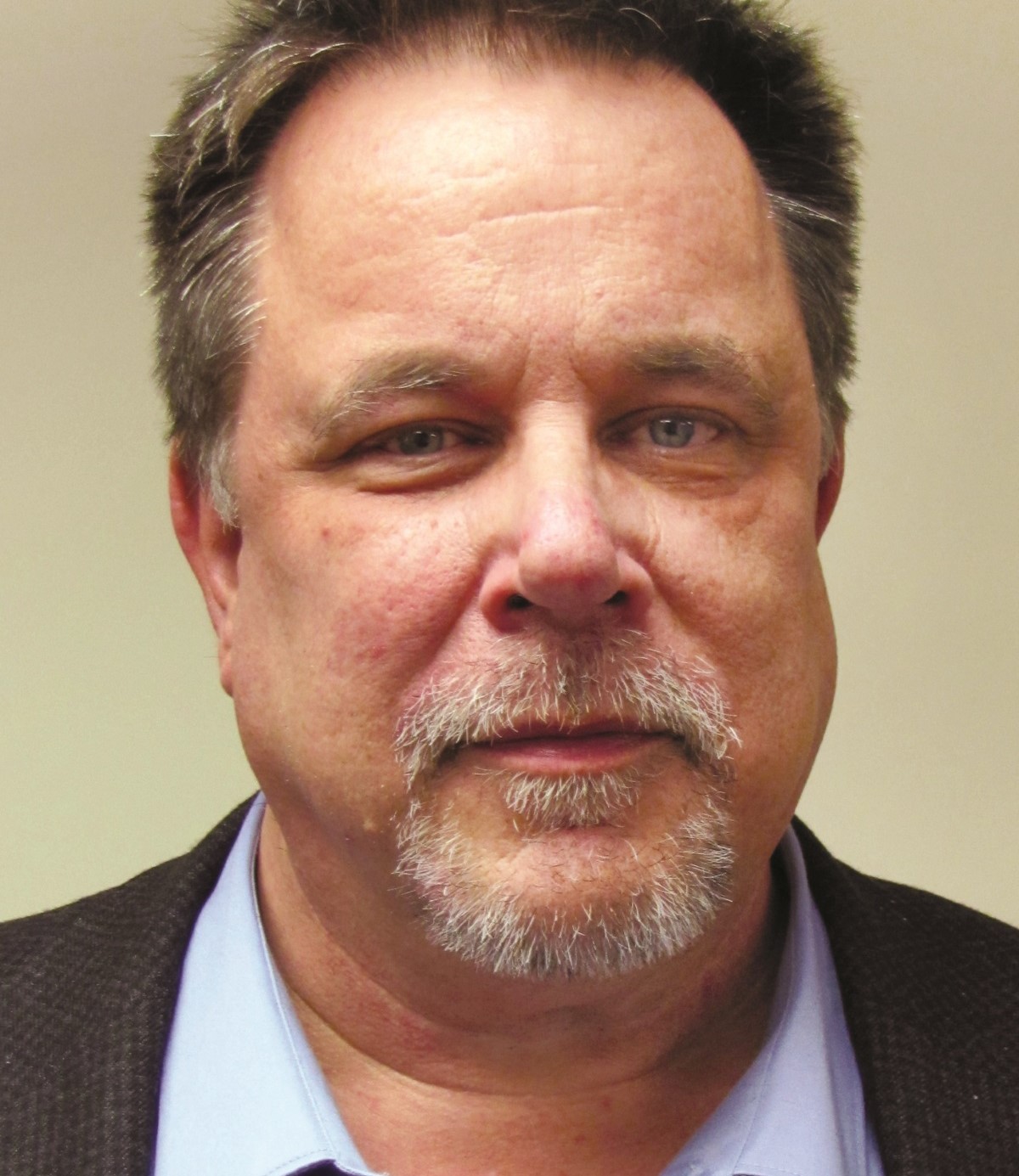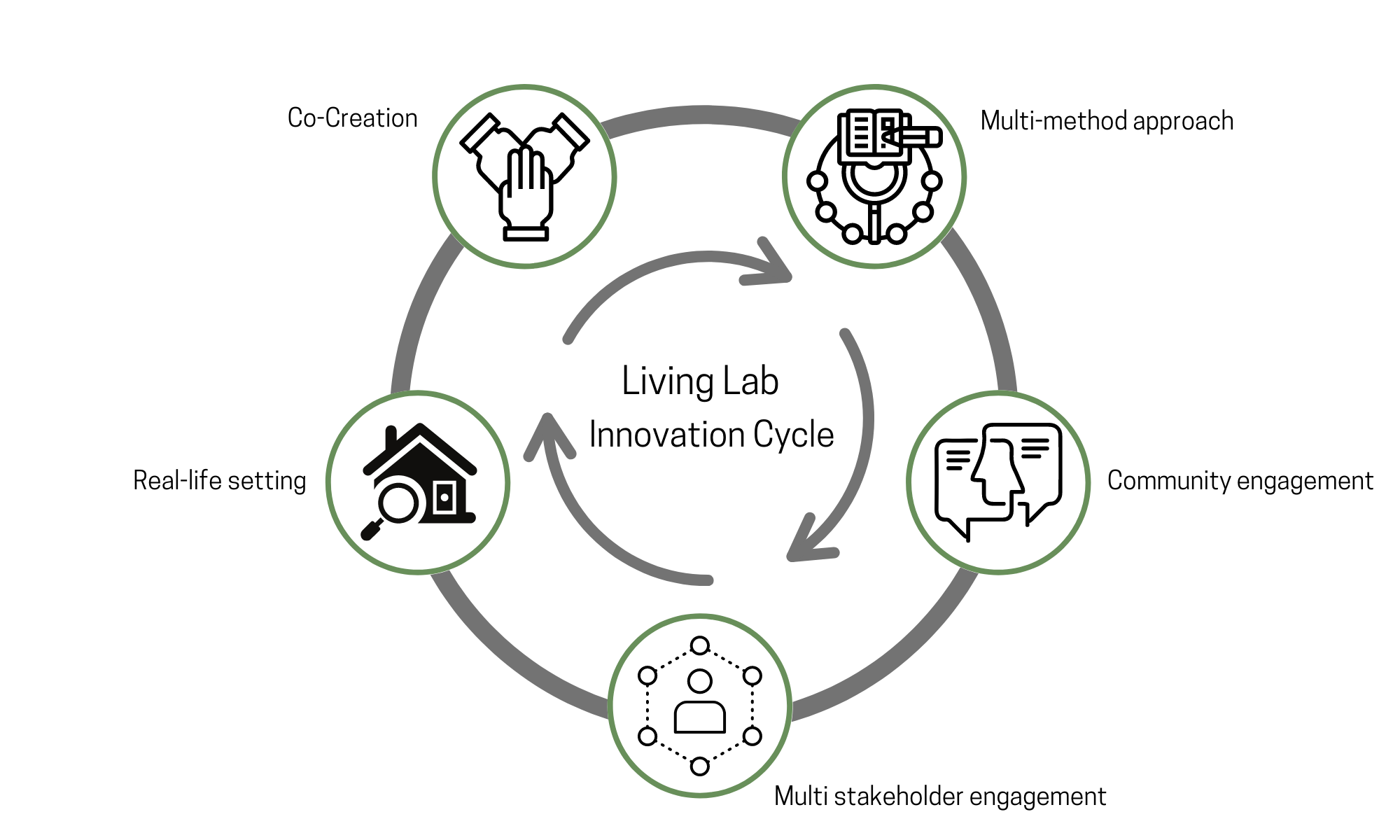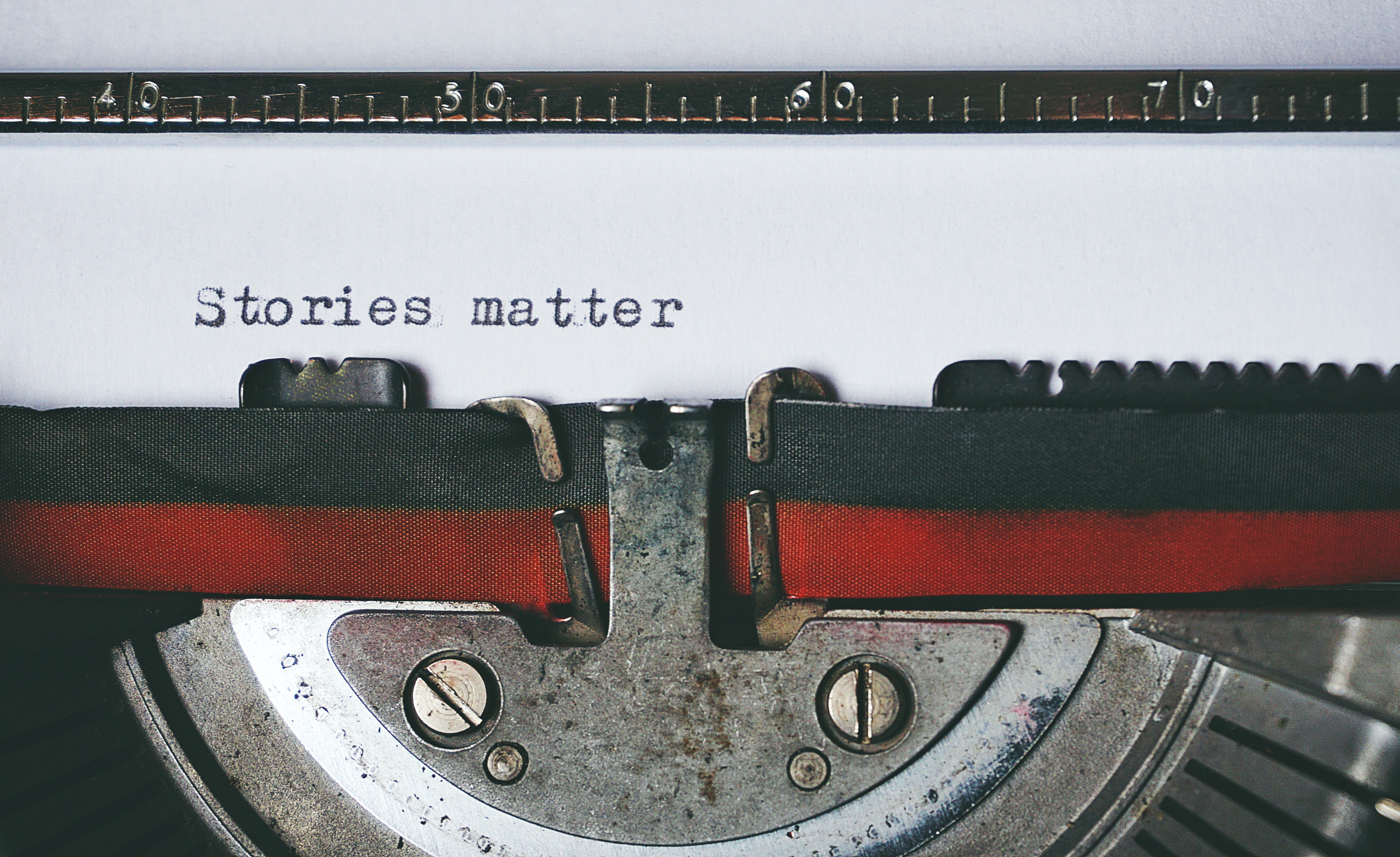
One key to organizational success has to do with the capacity of people to learn - learn from mistakes as well as learn from successes.The call for organizational learning has escalated over the years ever since our culture and economy transitioned from a "we make things" focus to what is called a "knowledge society."
Today, knowledge workers are highly valued as you know, but the real asset of a knowledge worker goes far beyond what she or he "knows". Simply put, no one can hold all of the knowledge they need to do what they do today, much less tomorrow.
The strongest asset of a knowledge worker is her/his ability to figure things out, find information, gain knowledge, as well as transform experience into knowledge. This means three things to me.
First, the knowledge worker has to excel at investigation (using her/his networks, tools, etc.)
Second, because of the pace of change, he/she must have a high tolerance for ambiguity. Aristotle once said something like: the more you know, the more you realize how much more there is to know. Another way of saying that is: the more you know, the more you realize just how much more there is for you to learn. It is ironic perhaps, but those who are knowledgeable are likely more aware of their limitations than those who are less ambitious about gaining knowledge.
Third, to truly grow in knowledge, we have to be able to accept that we aren't as knowledgeable as we can be or should be. In other words, you have to be self-critical, able to identify your "weak" areas, and be okay with not being as good today as you can be tomorrow.
Fundamentally, there are three categories of learning that help us grow our knowledge. These categories are: single loop learning double loop learning and triple loop learning, based on the work of Argyris and Schon (1974).

- Based on a diagram I found at www.thorsten.org. Click the diagram above to see more
First, there is single loop learning, which is effective for addressing simple problems. I heard this metaphor about single loop learning once, but can't recall where, but it makes sense. Single loop learning is like a thermostat. You set it for a temperature. On a hot day, if your home heats up, the thermostat activates your air conditioner to bring things down to your desired temperature (the thermostat setting). If on the other hand, it's cold outside and your home's temperature goes below the setting, the heat kicks in. And so it goes.
In your organization, single loop learning happens all the time. A client phones in with a complaint. You deal with it, hopefully fix what happened, and the complaint is resolved. Or you discover one of your employees is off on the wrong track doing something. He didn't understand the directions the first time, so you give the directions again and the employee gets back on track.
Single loop learning is important, but not enough for complicated or complex problems or challenges. That's where the second type of learning comes in: it is called: double loop learning.
Double loop learning does deeper and takes longer. The thermostat just regulates the temperature based on a setting. But it does not address the reasons why the temperature fluctuates so much. Sure the environment changes, but do you have sufficient insulation? Is your equipment running efficiently? Are all your filters clean? Delving into the reasons why the temperature fluctuates is about double loop learning In the client complaint and staff examples: What caused the client to complain in the first place? Was it a flaw in your service, in your communication protocols, or an error on the part of your staff? Did the staff person go off on the wrong track because they way directions are given are ambiguous or not made explicit in writing?
Double loop learning is about investigating the conditions and actions that caused the problem or issue in the first place. Often this type of learning calls for people to "get out of the box" and think imaginatively. It calls on people to understand how an alternative approach might work better. Learning experts will tell you that the capacity of an organization to be successful depends on its ability engage in this type of learning and at a quick pace.
The third type of learning is...surprise: triple loop learning. According to a resource I found on mangementhelp.org, "Triple- loop learning involves "learning how to learn" by reflecting on how we learn in the first place. In this situation, participants would reflect on how they think about the "rules," not only on whether the rules should be changed. This form of learning helps us to understand a great deal more about ourselves and others regarding beliefs and perceptions. Triple- loop learning might be explained as double- loop learning about double- loop learning "
An organization that is actively involved in all three types of learning is what you could call: a learning organization and such an organization provides the right environment for knowledge workers to share knowledge as well as grow it, together.
According to Michael J. Marquardt[1], “action learning is a dynamic process that involves a small group of people solving real problems, while at the same time focusing on what they are learning and how their learning can benefit [one another]….Perhaps action learning's most valuable capacity is its amazing, multiplying impact to equip individuals, especially leaders, to more effectively respond to change. Learning is what makes action learning strategic rather than tactical. Fresh thinking and new learning are needed if we are to avoid responding to today's problems with yesterday's solutions while tomorrow's challenges engulf us.”
Engaging in action learning involves coming together to create a learning space that not only allows but facilitates out of the box ideas. Sometimes people may wish to throw the box away completely; so the learning space must also be a safe space for exploration. Action Learning is an exercise in creativity and the audacity of people believing they can do better, be more, and make a bigger difference.
While the end results of such time together cannot be predicted please keep in mind that the purpose of coming together is bigger than crafting incremental change or making minor modifications to a program or changing service criteria.
The outcome of the time spent together will not automatically become the new way of doing business. However, the hope is that a group of dedicated, intelligent, and inspired (and inspiring) people will create something so compelling, it will take on its own momentum.
Action Learning Lens
The diagram above captures key aspects of the action learning approach that I suggest deserves your consideration. Throughout the Action Learning experience, people are challenged to continuously learn, adapt and change.
Key components of include:
- Building clarity and bonding around the challenges being addressed.
- Asking questions that instil trust and engagement and give birth to constructive dialogue about disruptive thinking.
- Being disciplined to listen well and in ways that further the conversation.
- Welcoming all that arises: being open to ideas, what-ifs, speculation, and unexpected perspectives.
- Include yourself in what you create. You are not being asked to create things you will walk away from. You should operate with the assumption that you can be the change you have decided you must create.
- Build on what you can act on. You may need to change how you think or behave in the future, but there is no point in envisioning a future that is not actionable.
There are a number of approaches to engaging in Action Learning. One that I have used is this: Bonding, Exploring, Building and Deciding. Special nod to my friend and colleague, Mark Cabaj, for his work with me on a Head Start Action Learning Project with me where we took this approach.
Bonding
Bonding is about coming to a common understanding of what is at the root of your organization or initiative and why it attracts and inspires us. People should talk about why they believe big change is necessary and how we not only need to change as an organization but also need to change as individuals, professionally and personally.
During the bonding phase, people should ask questions of one another and engage fully in addressing them. Why does our organization exist? Who are our clients? How do we see the world as an organization? Are we clear about our service orientation or philosophy? Do we feel we are accomplishing what we believe we should be?
The point to all of this it work together to ensure there is a common sense in the room about prevailing trends, threats, and motivations for change. The discussion should include looking at data and discussing what it means and how we feel about what it means. Does it speak of success? Are we getting the right bang for the buck? Do we see shortcomings? What doesn’t the data tell us?
Exploring
Exploring can be incredibly exciting but also unnerving. Think of it as a group of explorers looking for a new place to settle and build a future. They will travel to many places, take stock of the land, uncover the possibilities offered by the landscape and assess along the way their potential to excel. They will arrive at dead ends or move on in search of something better. And throughout it all they will also face themselves, having to break new ground internally, clear a path, and learn how to adjust their thinking and fears as they learn more about themselves and the world around them.
Exploring involves group think, group imagination, group risk, and group engagement of wild ideas as well as pictures and stories of what could be. It involves learning techniques that help foster dialogue and the development of ideas.
Exploring also entails being honest about why you prefer this idea over that idea, how you are doing with balancing what is best for the common good and your own self-interest. By the way, it is to be expected that participants have a good measure of self-interest. Welcoming it and working with it is preferred over pretending we have hung on the hook over there.
Building
The exploration of ideas and possibilities will shift into building prototypes of innovations and new ways of delivering on your intent. Small teams or design teams work together to engineer a new model or test out a new delivery method.
The results of the prototyping work of teams should be even if the work is not complete. Teams might switch projects to get fresh ideas. It will depend on what is going on and what is needed to move forward with the work.There is a need for balance. However different the prototypes may be from what we do now they still need to stand up to the results we are striving for. And they need to fit the new environment we are experiencing today and anticipate will be with us tomorrow.
Deciding
Deciding begins with reflecting, thinking about the options, and thinking about the possible future. What criteria will we use to make decisions? As we all know, not all ideas pan out; not every prototype becomes a product. In the end people need to decide. They need to decide which of the alternatives are best our stakeholders or clients, which ones can attract others to join us in bringing to fruition, and which ones the group itself can move forward.
This is about setting priorities not only for the prototypes we like best but also setting next step priorities about maintaining, if not increasing, the momentum of the work the group has accomplished.
Acknowledgements
[1] Michael J. Marquardt, professor of human resource development and international affairs, GSEHD, has written two books on action learning - Action Learning in Action and Optimizing the Power of Action Learning.






